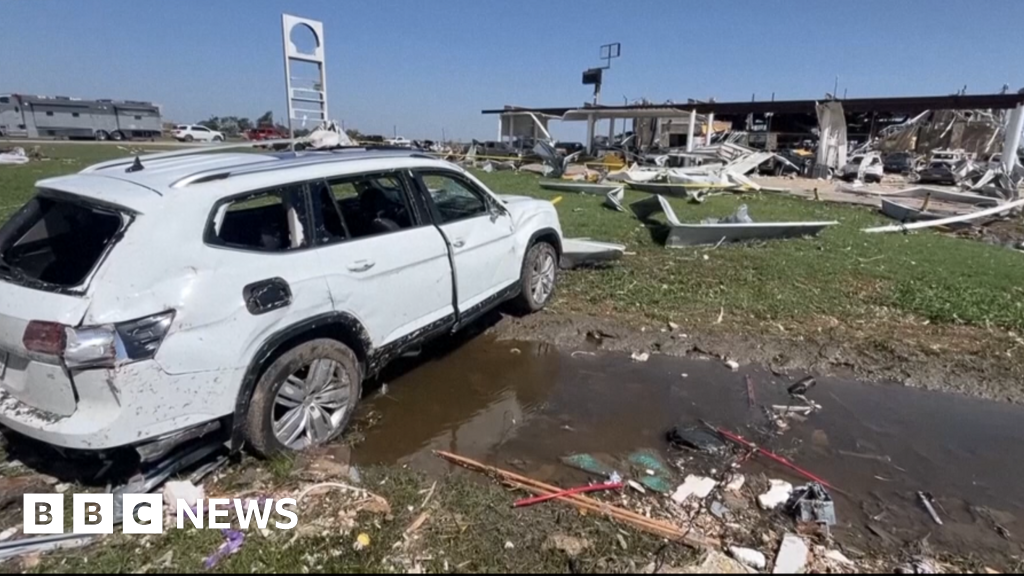- cross-posted to:
- [email protected]
- cross-posted to:
- [email protected]
Tornadoes and devastating thunderstorms have left nearly 300,000 residents across seven states without power as of Monday night.
Over the weekend, huge storms killed at least 23 people and left a path of destruction across the central US.
Forecasters said the greatest weather risk has shifted east, covering a broad sweep of the country from Alabama to New York.
More thunderstorms, damaging wind gusts, hail and flash flooding are expected.
Power companies say it’s too expensive to bury power lines but they will fix the overhead lines over and over.
It is extremely expensive and arduous to bury lines that have been aerial for decades. The cost to bury existing lines is exponentially greater than the cost to keep fixing them as needed for decades. New lines are sometimes buried depending on whether it’s an upgrade to existing infrastructure, power going to a new neighborhood, etc.
Do yourself a favor and look into exactly what it would take just to get approval from the city, county, etc and right of way from the various owners of land where you want to bury them. Not to mention the hell that would cause for traffic when you have to shut down roads to go under them or worst case tear them up and replace them.
I am not giving the utility companies a pass here but it’s not as easy as some people seem to think it is.
If I recall, it’s between 3x and 10x as expensive to build buried lines versus overhead, tending more towards the high end of that number in existing built-out neighborhoods where there’s a lot of existing stuff in the right-of-way that needs to be removed or worked around somehow.
The real problem that folks have been bringing up is for-profit electric utilities ignoring line maintenance and instead just pocketing as profit the funds that should have paid for that work. Lots of folks in my area have noted that the utility used to regularly trim trees near the lines, but that work basically stopped after it merged into a larger regional power company. Even when people would call to report branches basically draped over the lines, the utility would ignore the issue.
For what it’s worth, I live in a relatively small pocket where power is provided by a county public utility, and the outages in our area were much less severe and power was restored to all but one or two people within a day. The utility board is far from perfect, but in this case they performed significantly better than their for-profit peer around us.
I’m in Duke energy territory and the past few years they have been really getting their act together. It doesn’t make it better than a coop model but they have been extremely proactive about clearing trees and anything else that would interfere with the lines as well as adding new capacity to the existing lines, adding/upgrading/replacing poles that are holding more weight than they should, etc.
I meant to mention in another comment that I was utility locate tech for a couple of years so in addition to my standard geek creds, I have a deeper understanding of this and see it from a different angle than the average citizen.
Personally we are planning on getting some solar panels installed hopefully this year or early next year, that along with a large enough battery and a v2h adapter (when it becomes an option for my car) will make us virtually immune to outages.
We could use a Nikola Tesla today.
We have OTA wireless charging. It’s effective for DC transmission.
In the fight for AC vs. DC between Edison and Tesla, Tesla’s predictions of end use turned out to be correct. However, Edison’s point about long range transmission voltage drop was the determining factor. We’d need countless more substations to compensate for the voltage drop of long range DC transmission. Although, now it’s theoretically possible in areas with high solar production adoption supplementing the grid.
And every telcom company agrees with them.
Last time I looked at a BOM, it was between $40k & $60k per mile to bury fiber, even more for rockier terrain.
Fiber doesn’t burn down huge swaths of the United States when a pole falls over. It’s not really “cheaper” after the lawsuits start rolling in.
https://www.nytimes.com/2024/03/07/us/texas-smokehouse-creek-fire-xcel-energy.html
Welcome to the new normal.
No, it’s going to get worse.
Normally worse.
Exponentially normally worse.
Neighborhood backup batteries would help with this and help smooth out renewable energy.
and from over construction
our town has rolling blackouts constantly with an increase in the bill to match
US had energy problems before this current issue
That isn’t over construction, that’s under production of electricity. My city has a literal fuck ton of manufacturing all over and we have no rolling black outs and very little outages even with most of the lines above ground. We do get our power from a nuclear plant so that definitely helps.
A lot of these energy issues are hyper local. Texas for example is the worst in the country for maintenance, price, outages, etc and it’s not solely because of the weather.
That’s kinda crazy. I always thought that a thing from the movies. In 40 years i only remember 3 blackouts, and two of them were when i was like 7 and it had just an absurd amount of snow.








